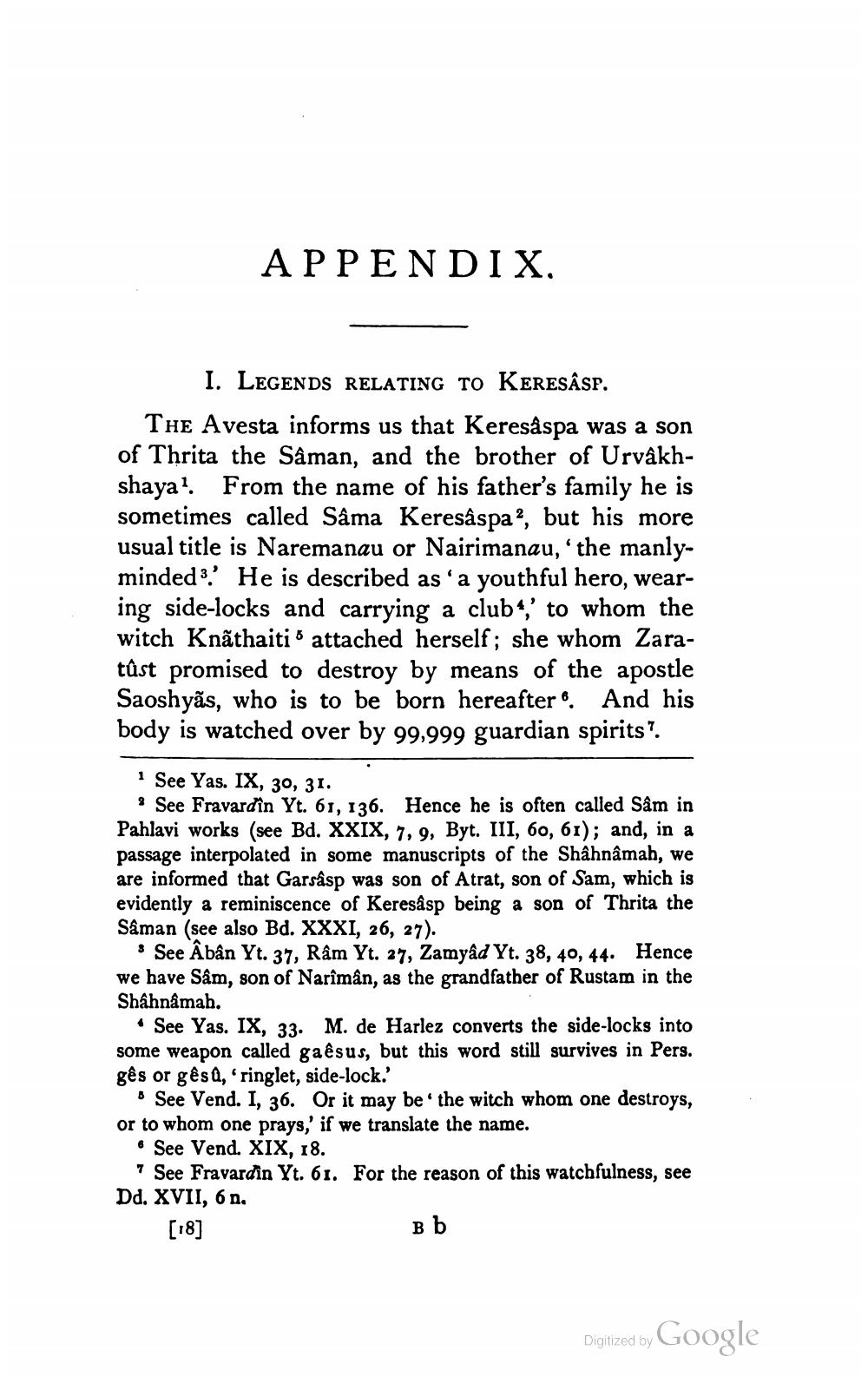________________
APPENDIX.
I. LEGENDS RELATING TO KERESASP. The Avesta informs us that Keresåspa was a son of Thrita the Sâman, and the brother of Urvâkhshaya? From the name of his father's family he is sometimes called Sâma Keresâspa?, but his more usual title is Naremanau or Nairimanau, the manlyminded?' He is described as 'a youthful hero, wearing side-locks and carrying a club«,' to whom the witch Knãthaiti attached herself; she whom Zaratûst promised to destroy by means of the apostle Saoshyās, who is to be born hereafter. And his body is watched over by 99,999 guardian spirits?.
1 See Yas. IX, 30, 31.
? See Fravardın Yt. 61, 136. Hence he is often called Sam in Pahlavi works (see Bd. XXIX, 7, 9, Byt. III, 60, 61); and, in a passage interpolated in some manuscripts of the Shâhnâmah, we are informed that Garsasp was son of Atrat, son of Sam, which is evidently a reminiscence of Keresåsp being a son of Thrita the Saman (see also Bd. XXXI, 26, 27).
* See Âbân Yt. 3, Râm Yt. 27, ZamyadYt. 38, 40, 44. Hence we have Sâm, son of Narîmân, as the grandfather of Rustam in the Shahnamah.
• See Yas. IX, 33. M. de Harlez converts the side-locks into some weapon called gaêsus, but this word still survives in Pers. gês or gêsa, ringlet, side-lock.
See Vend. I, 36. Or it may be the witch whom one destroys, or to whom one prays,' if we translate the name.
See Vend. XIX, 18. 7 See Fravardin Yt. 61. For the reason of this watchfulness, see Dd. XVII, 6 n. [18]
Bb
Digiized by Google




